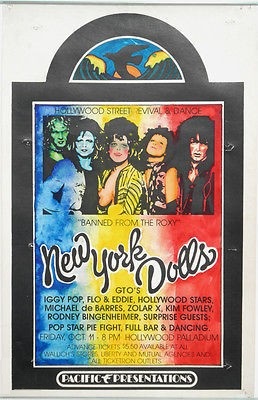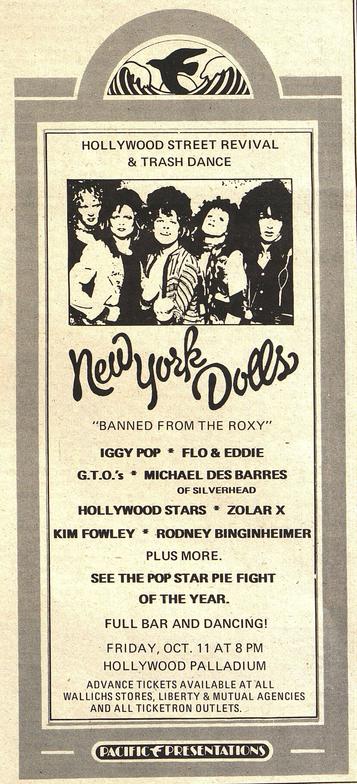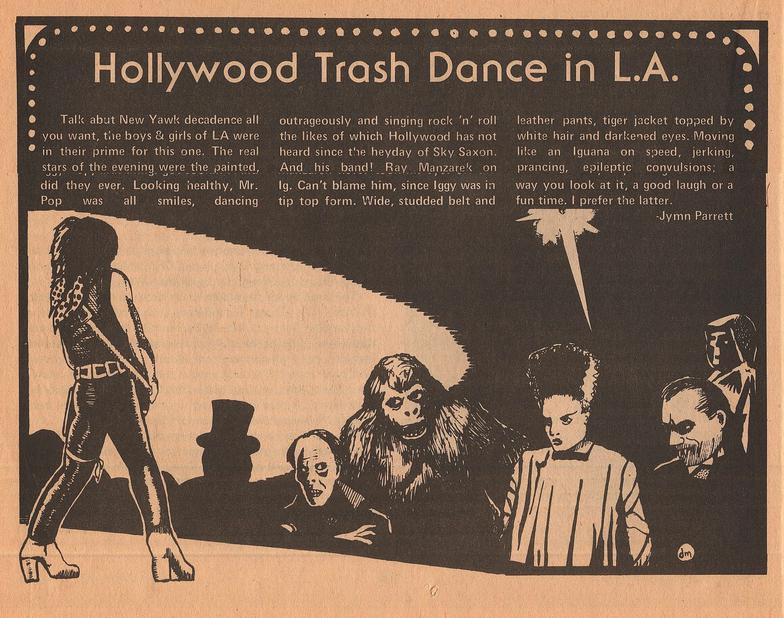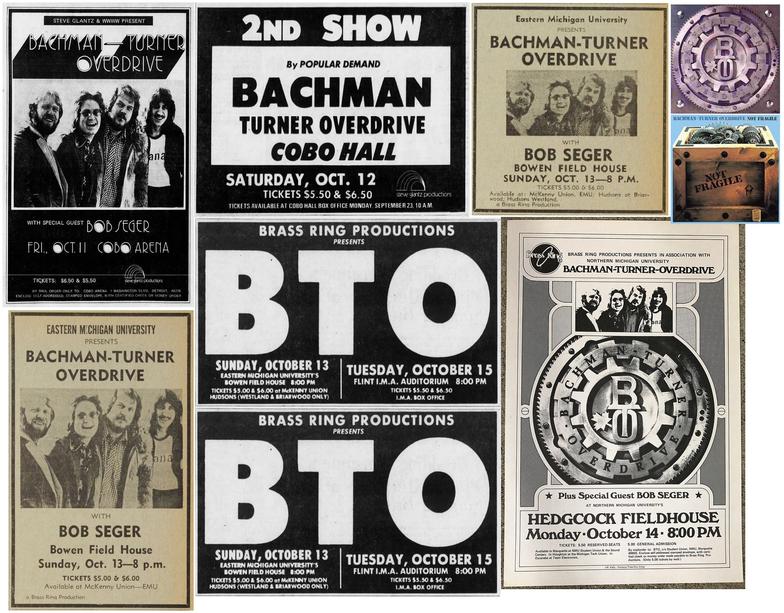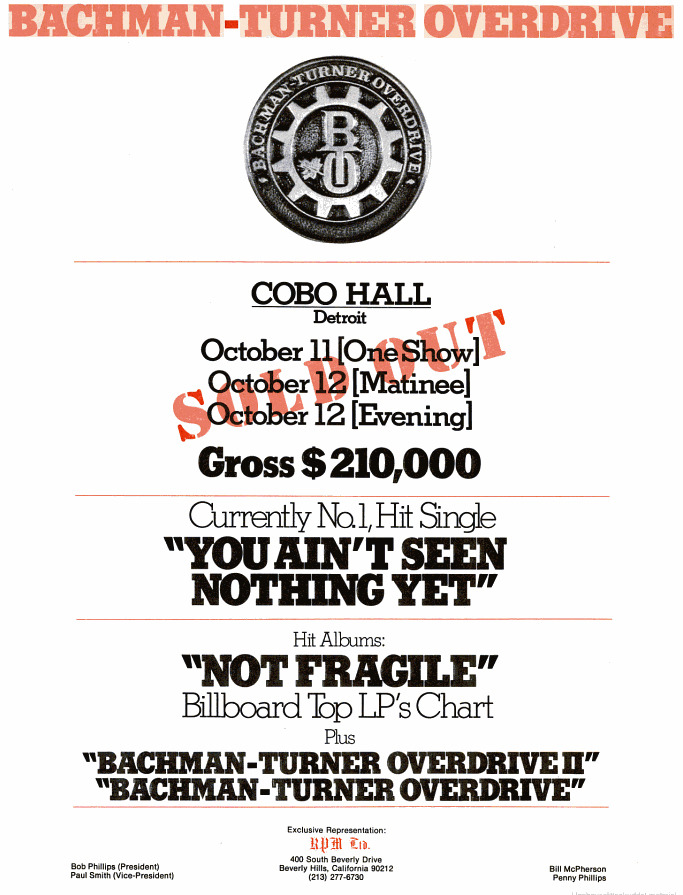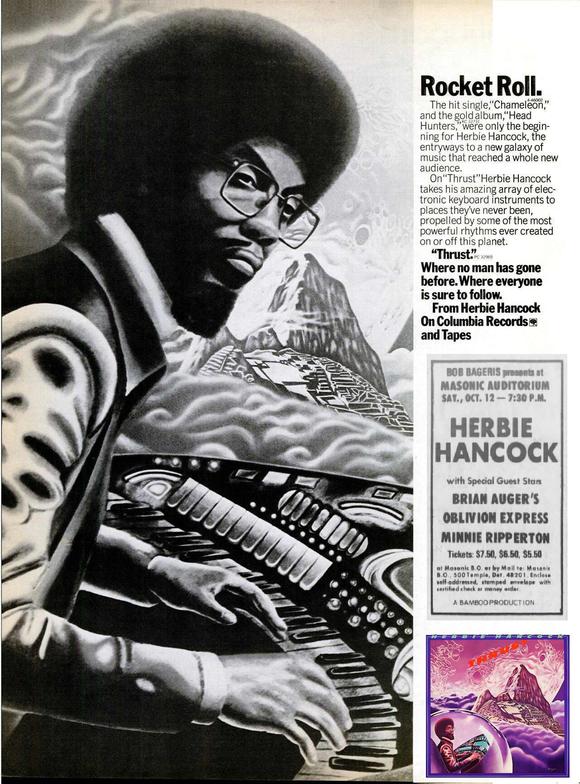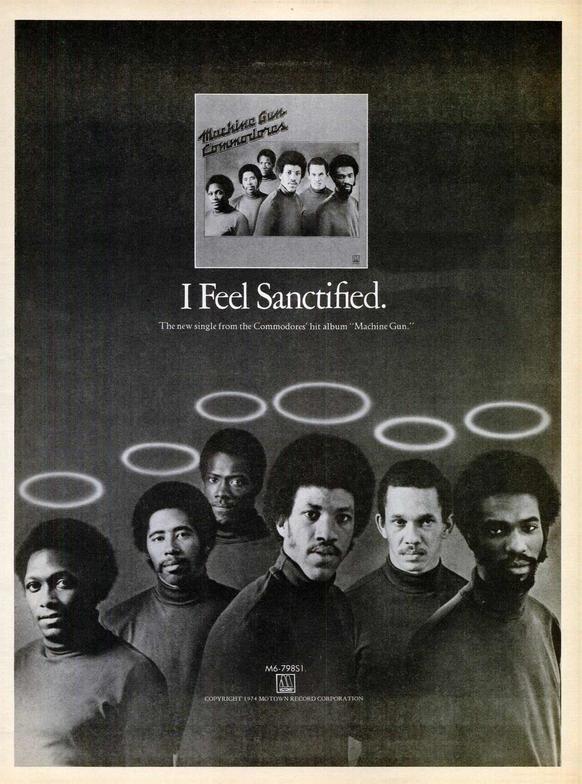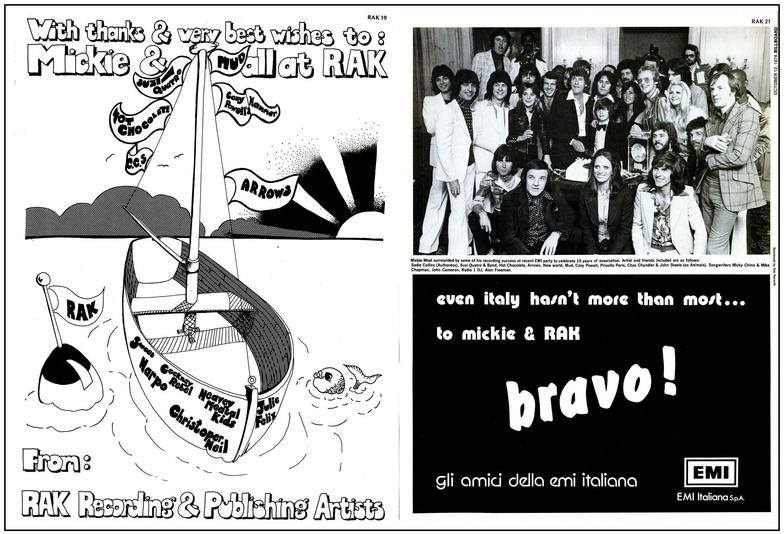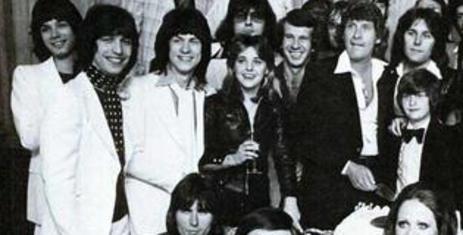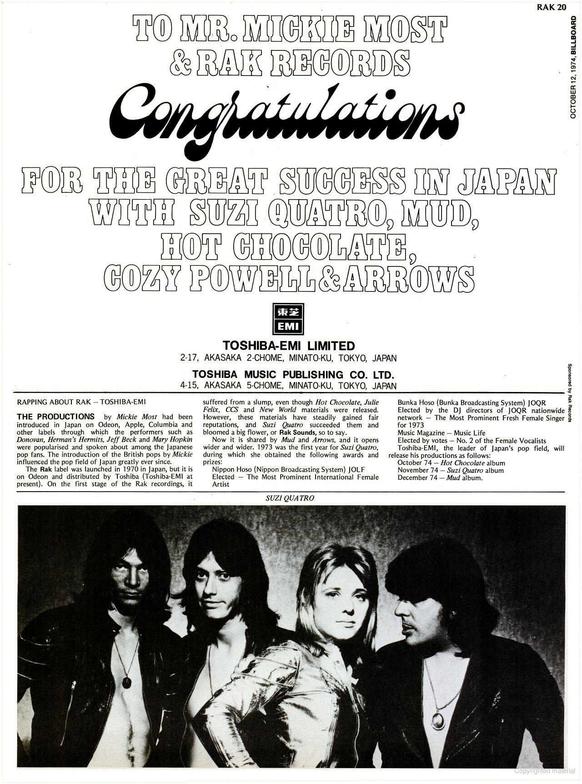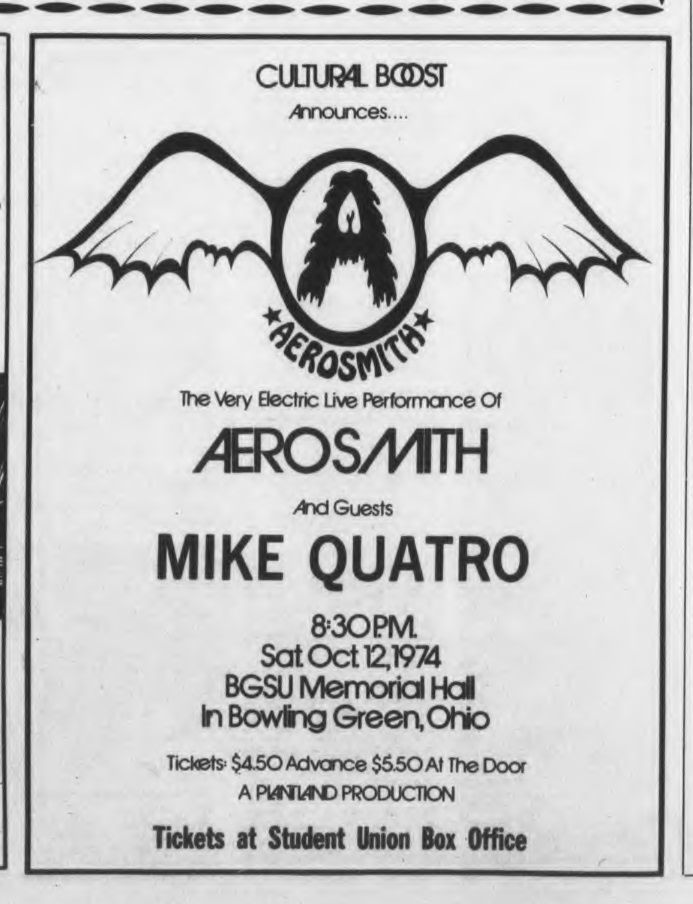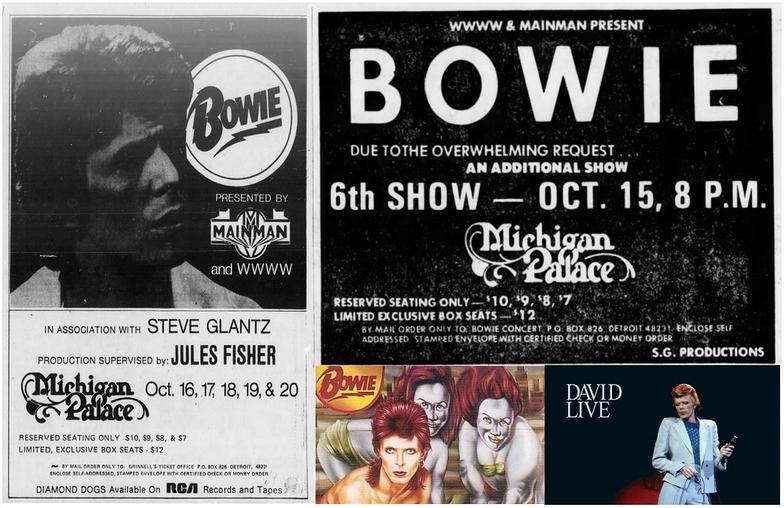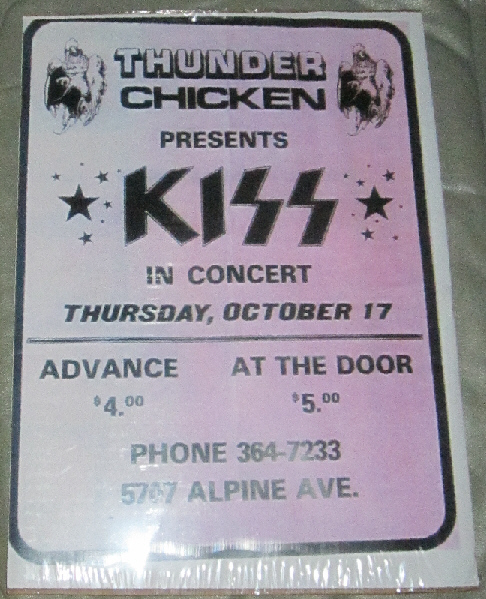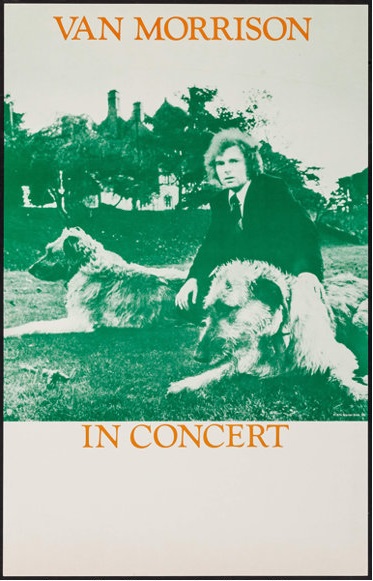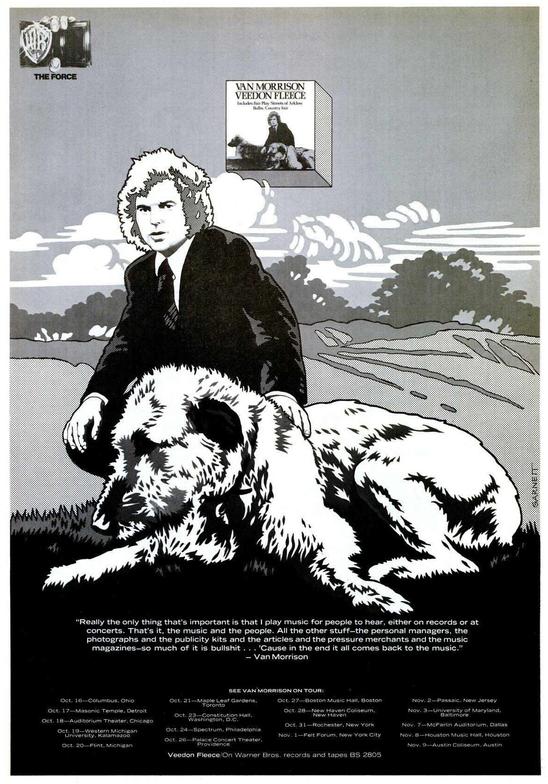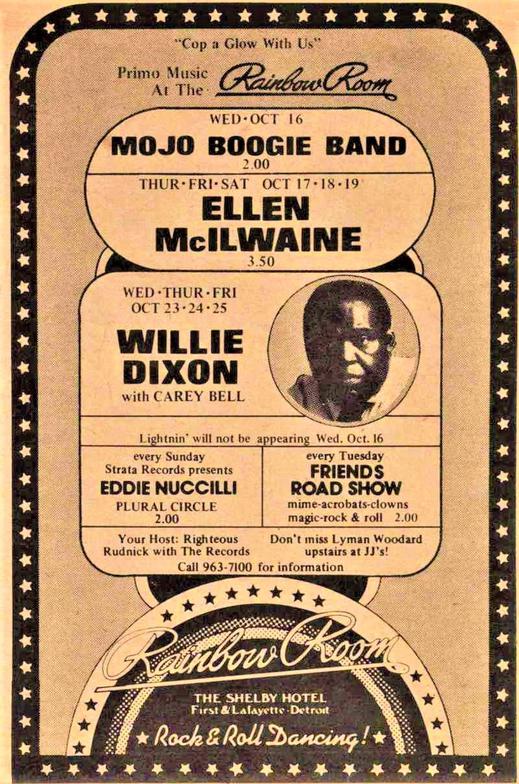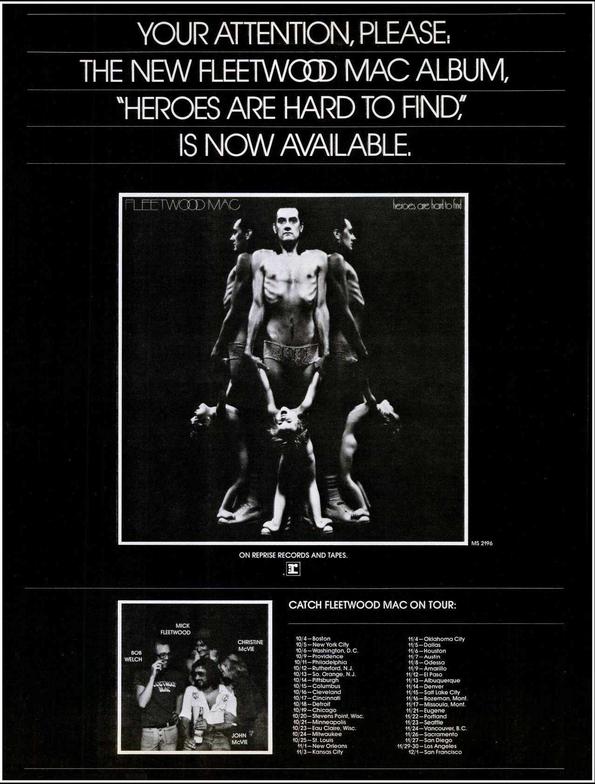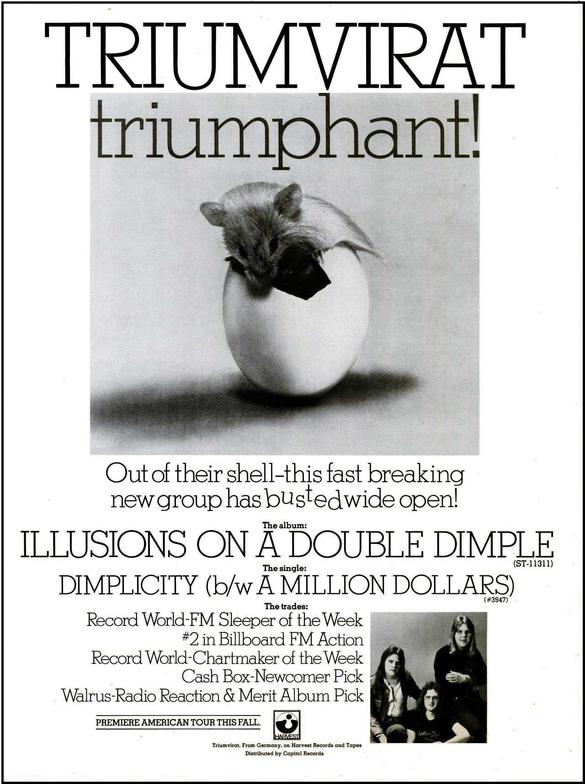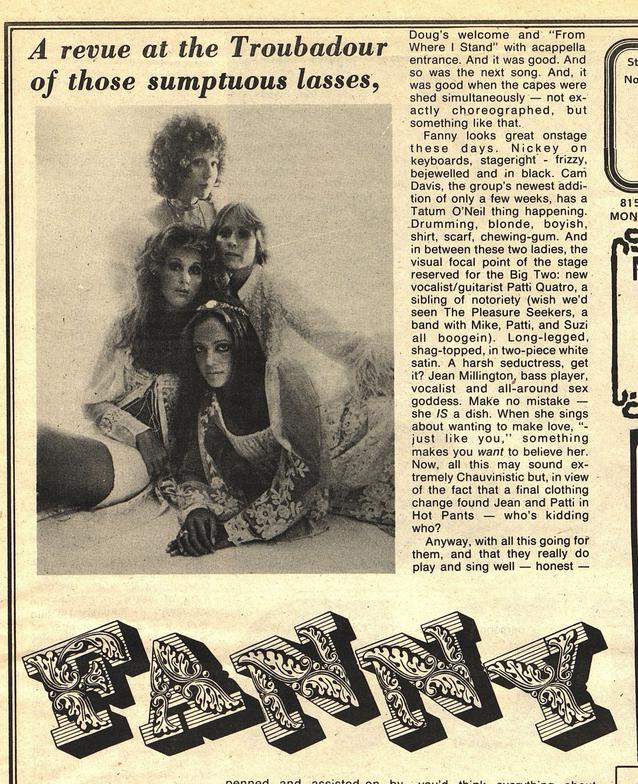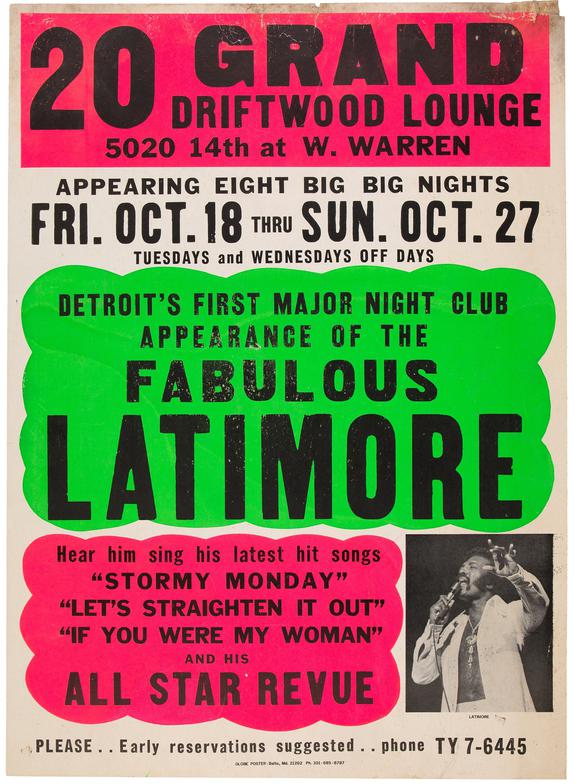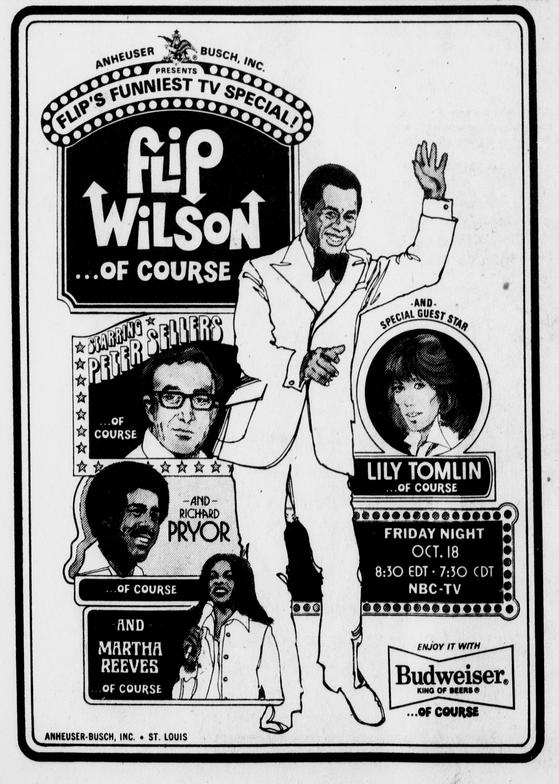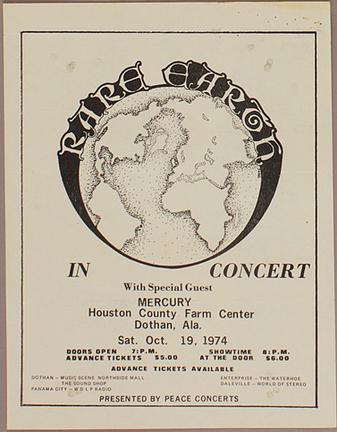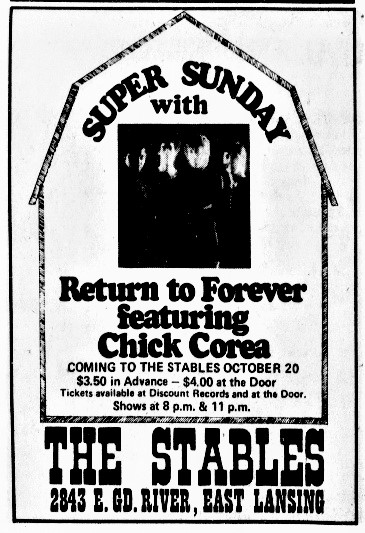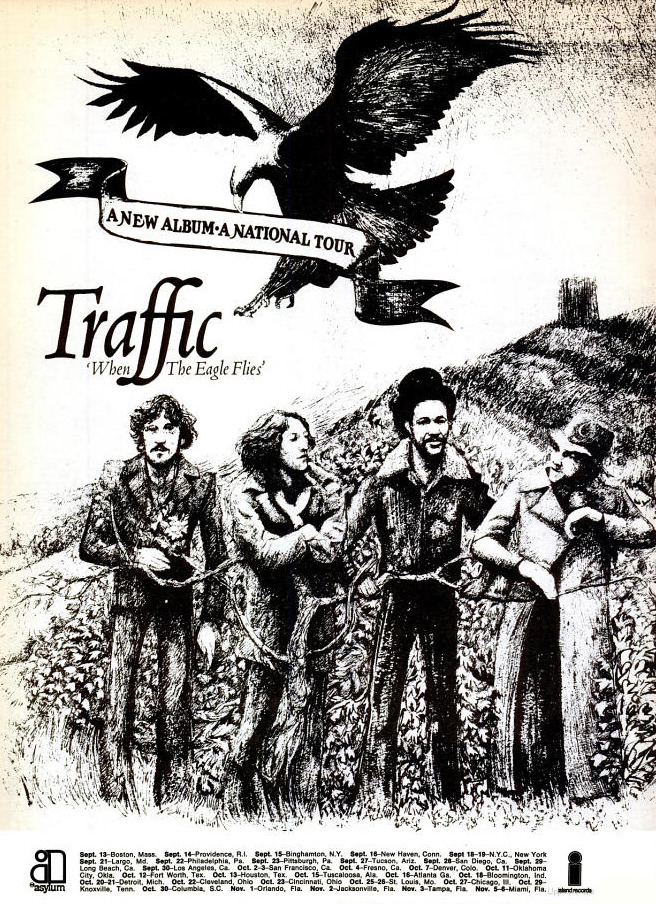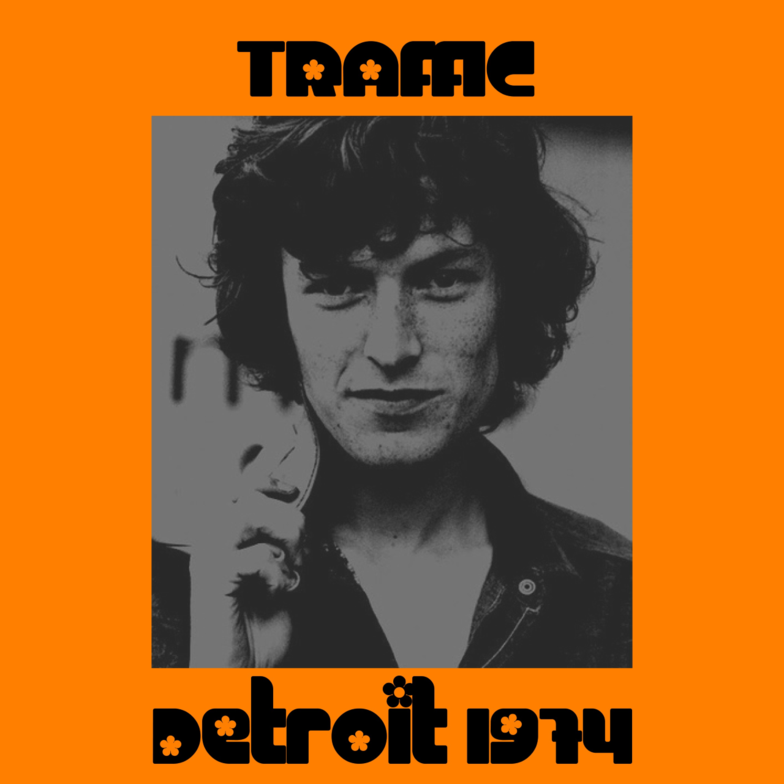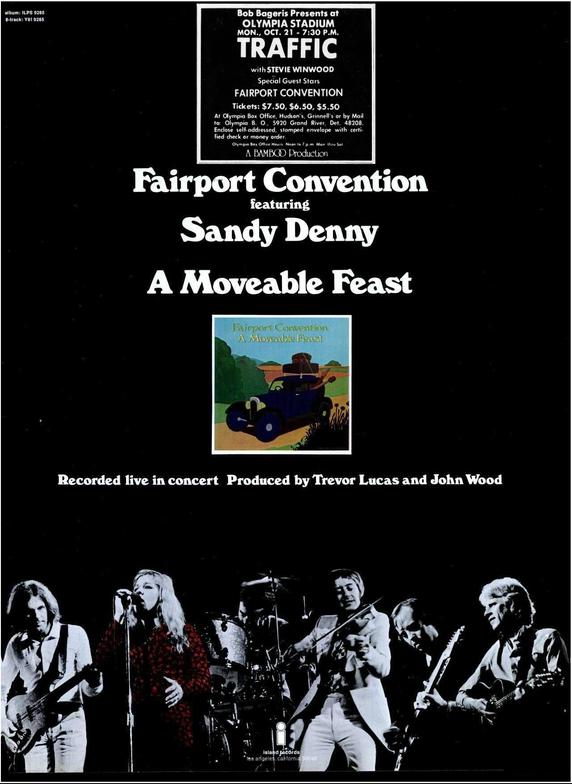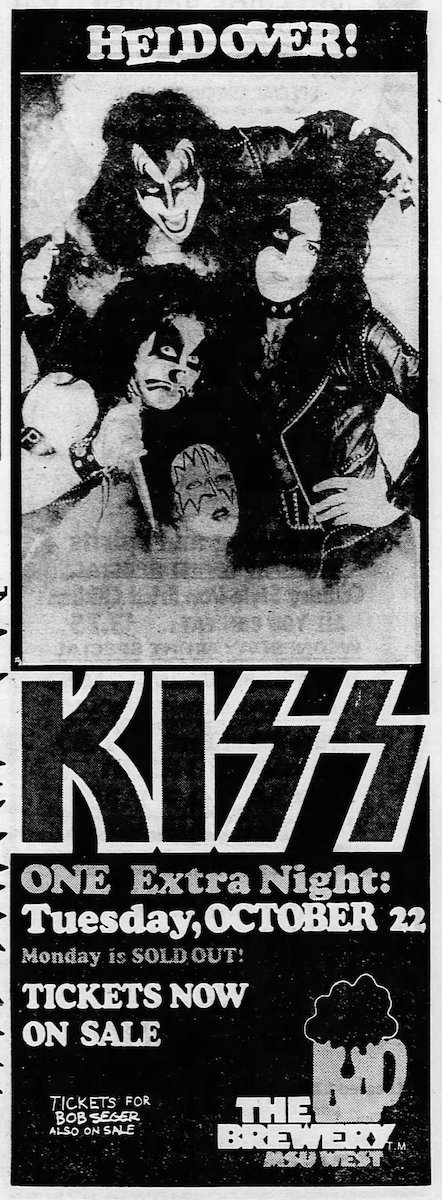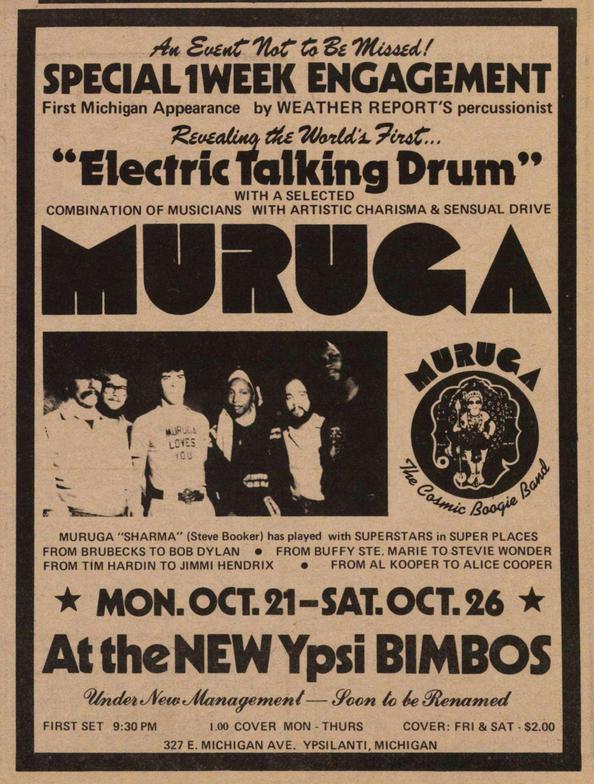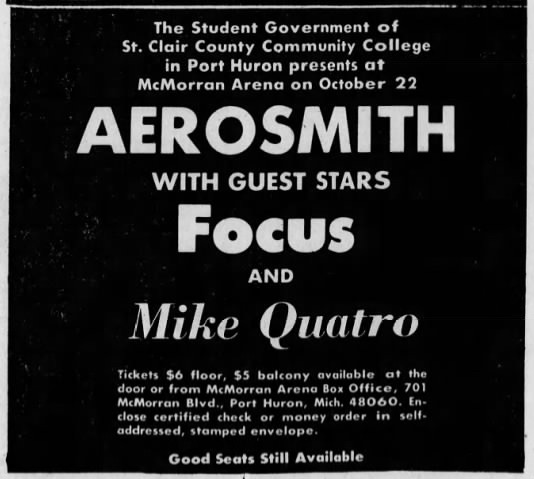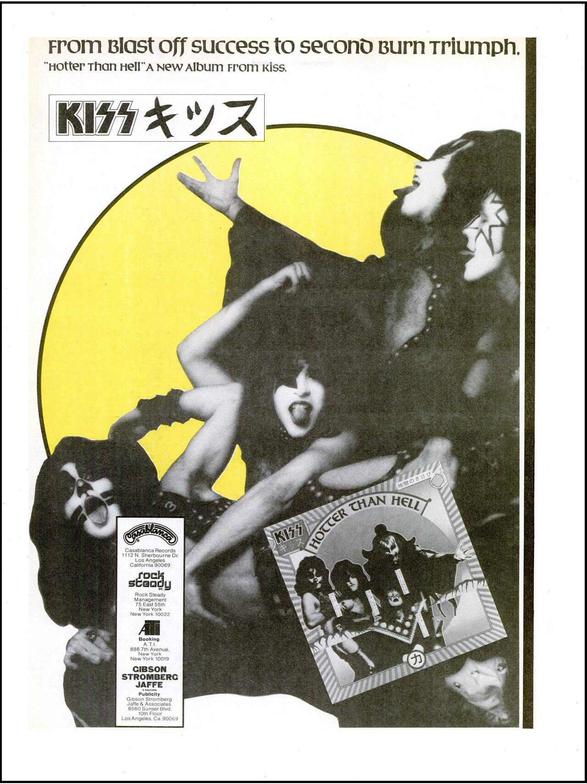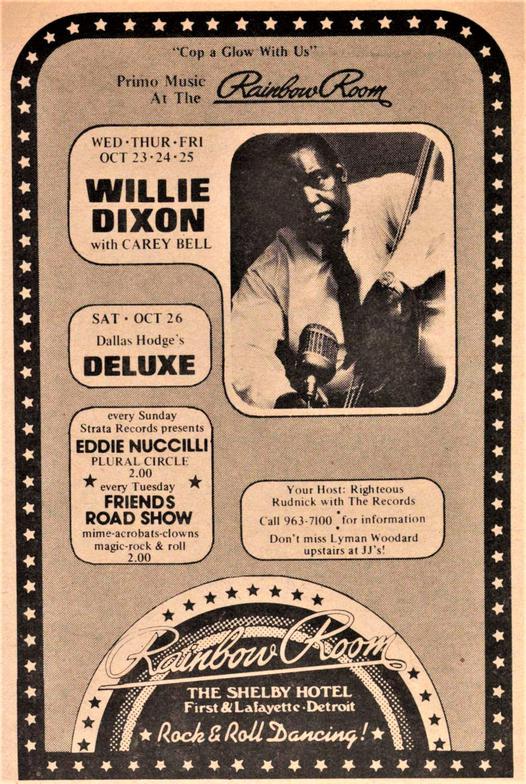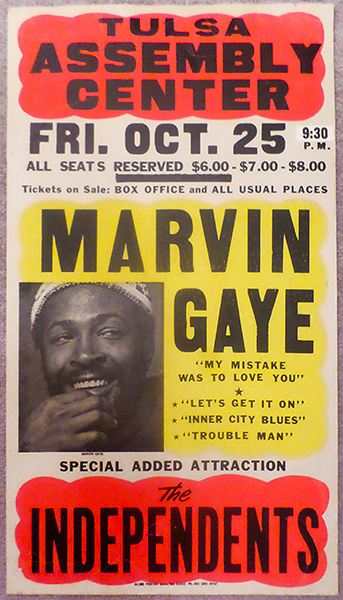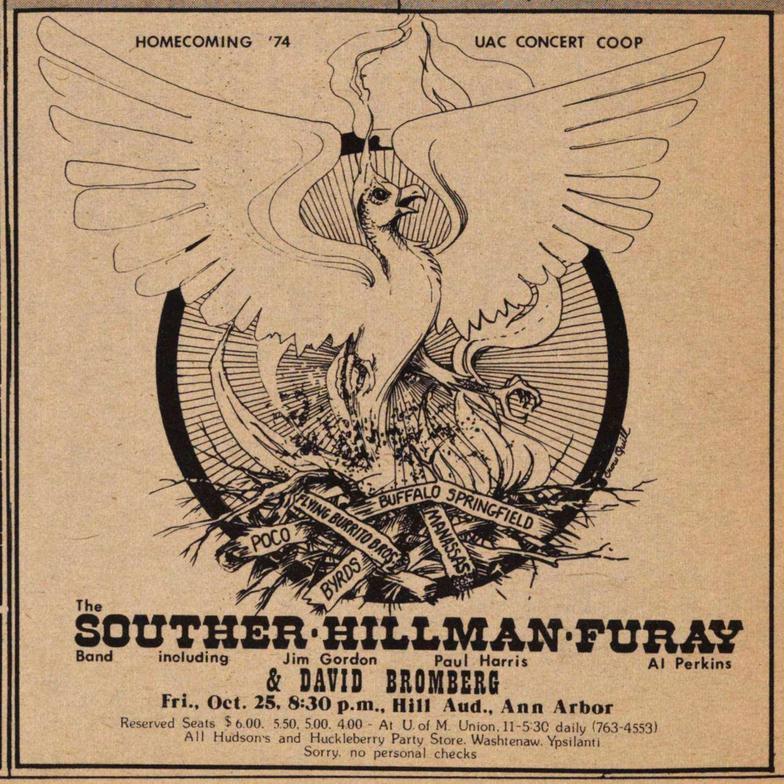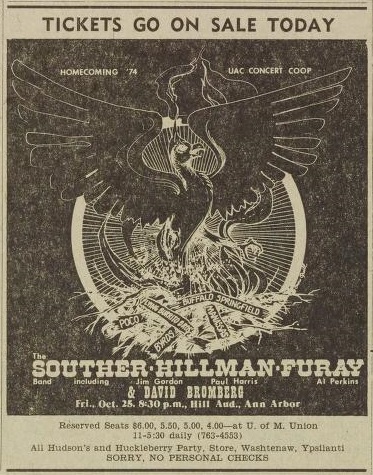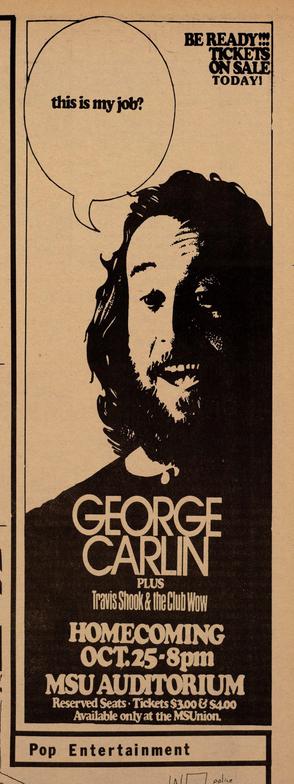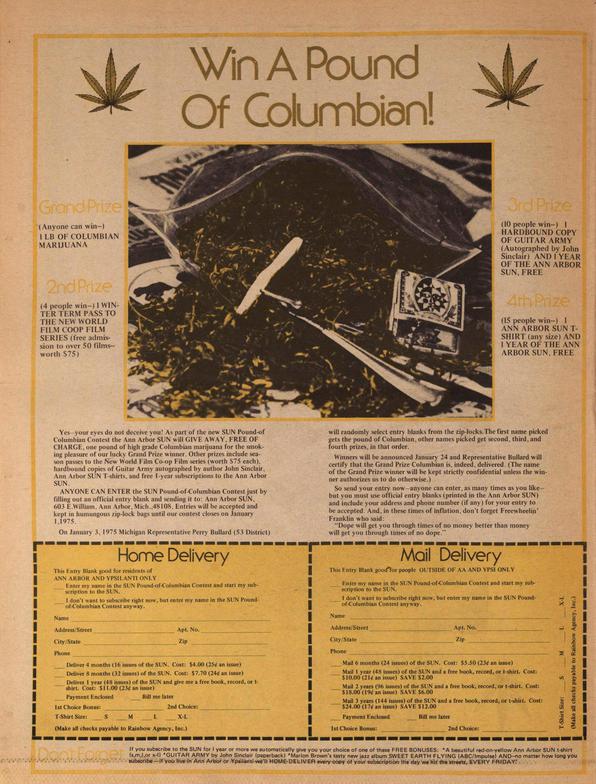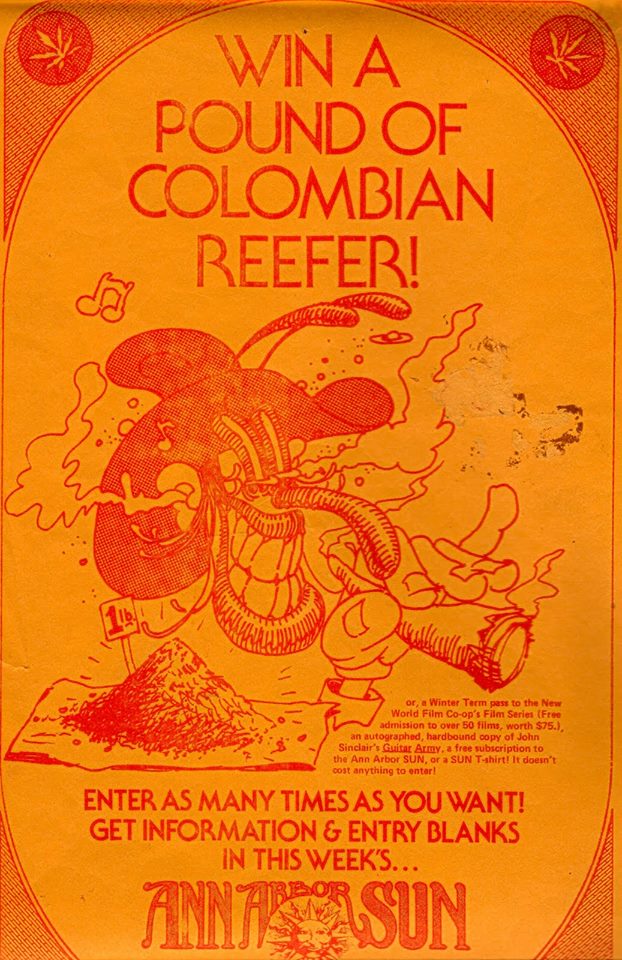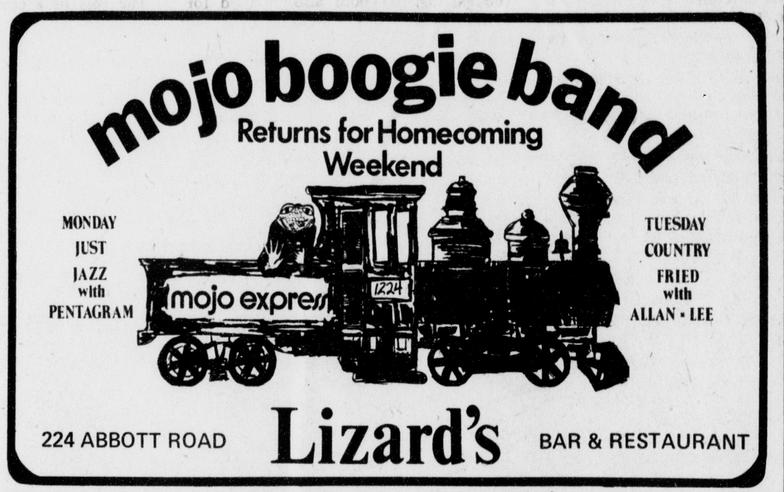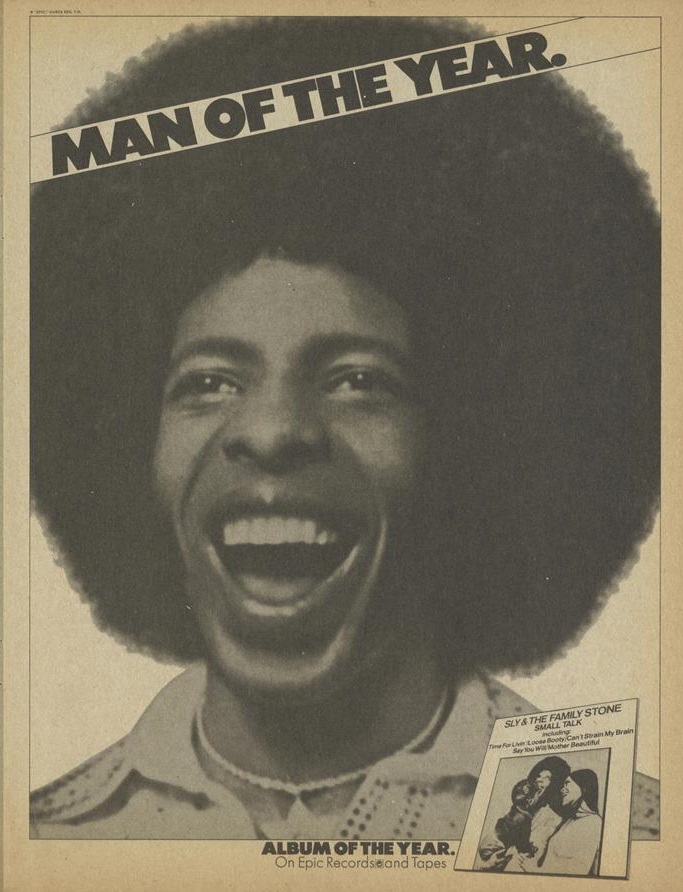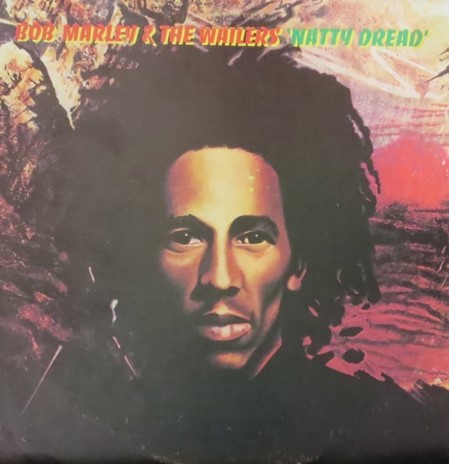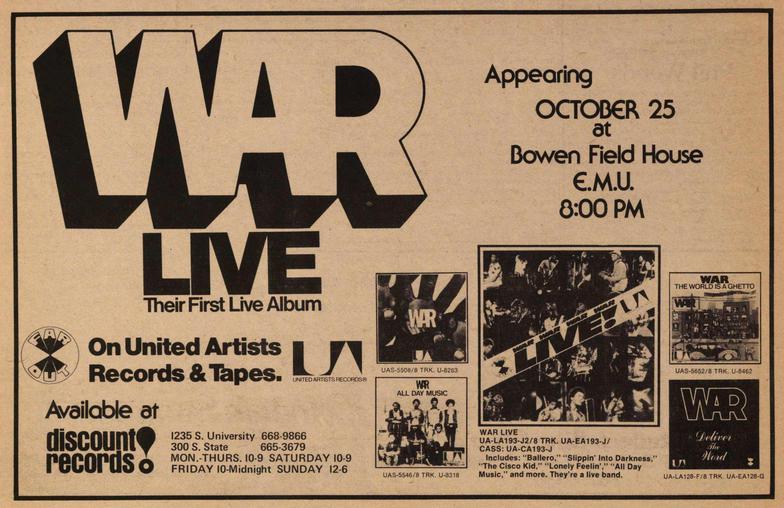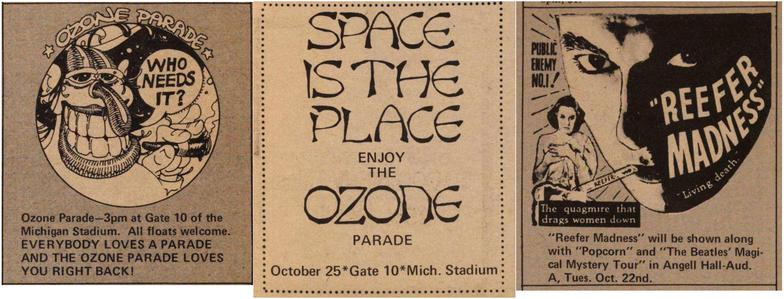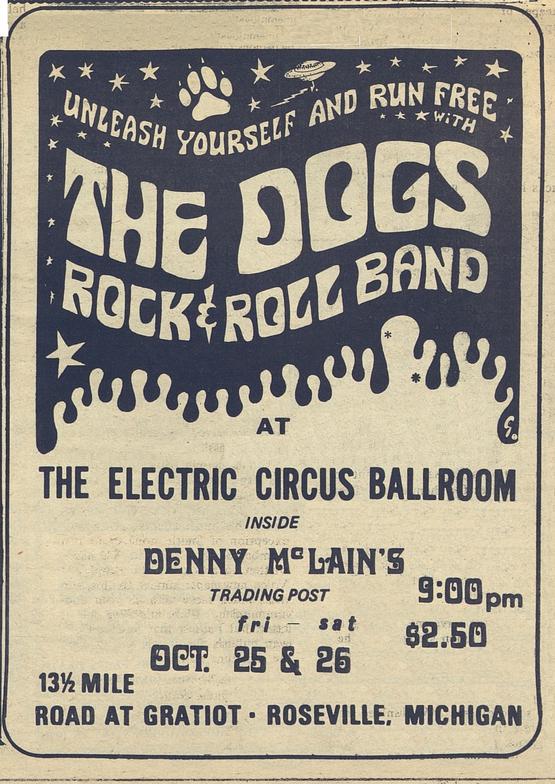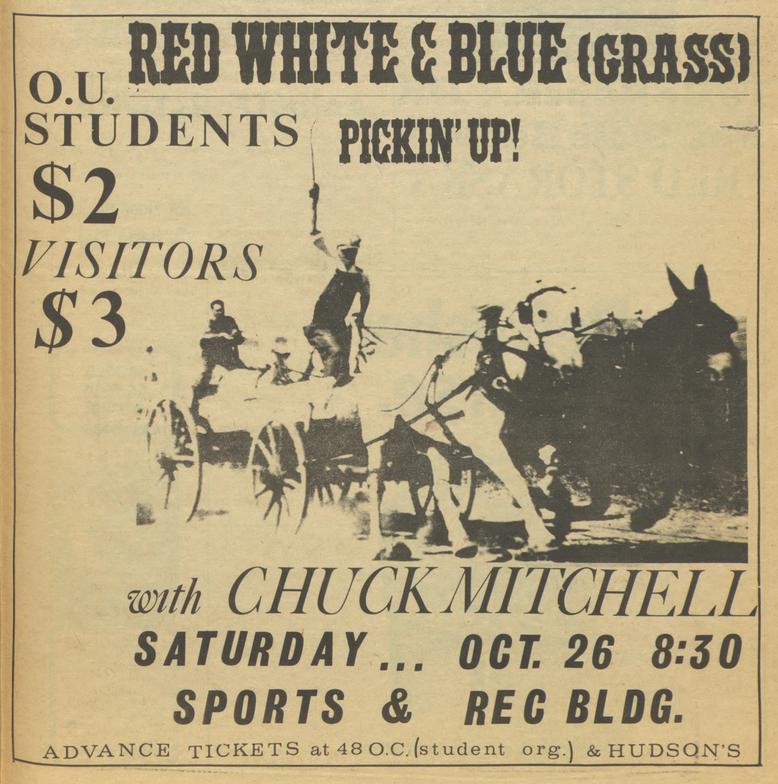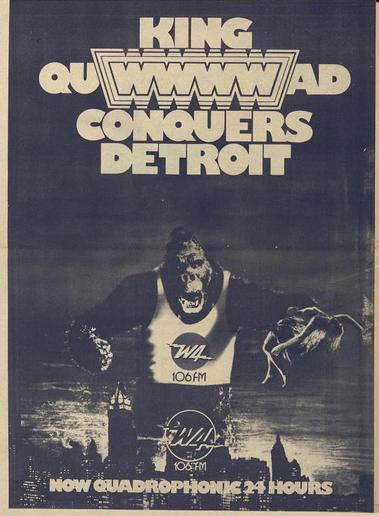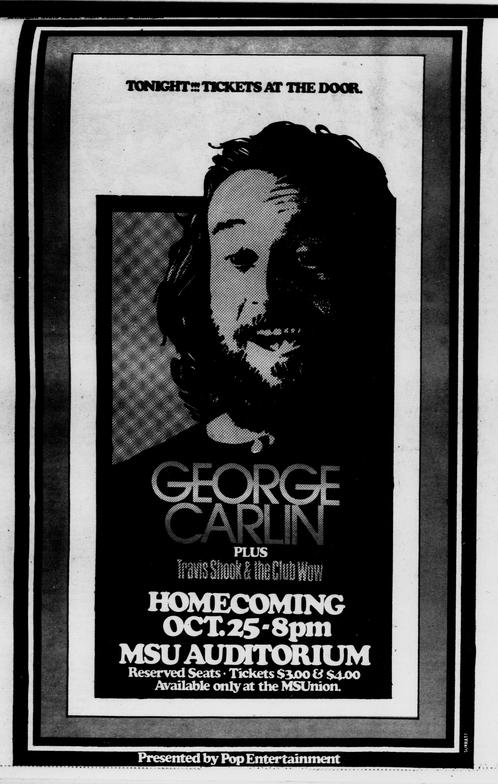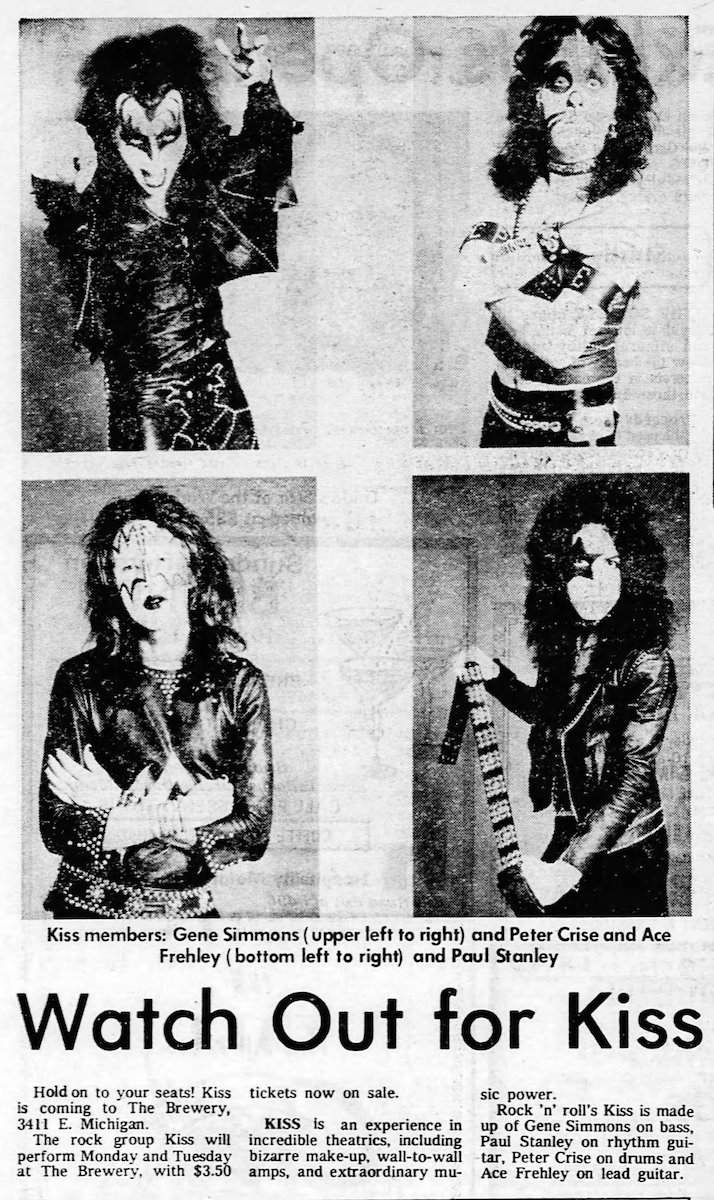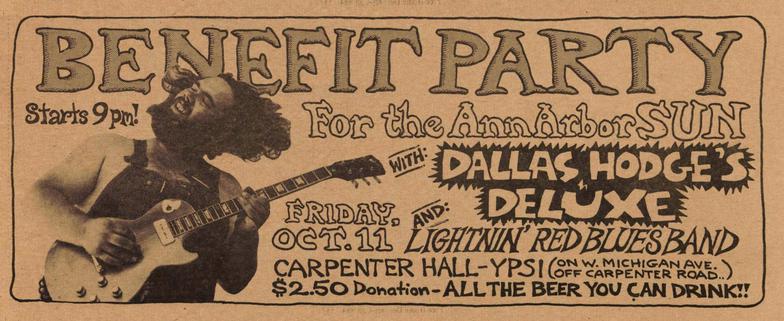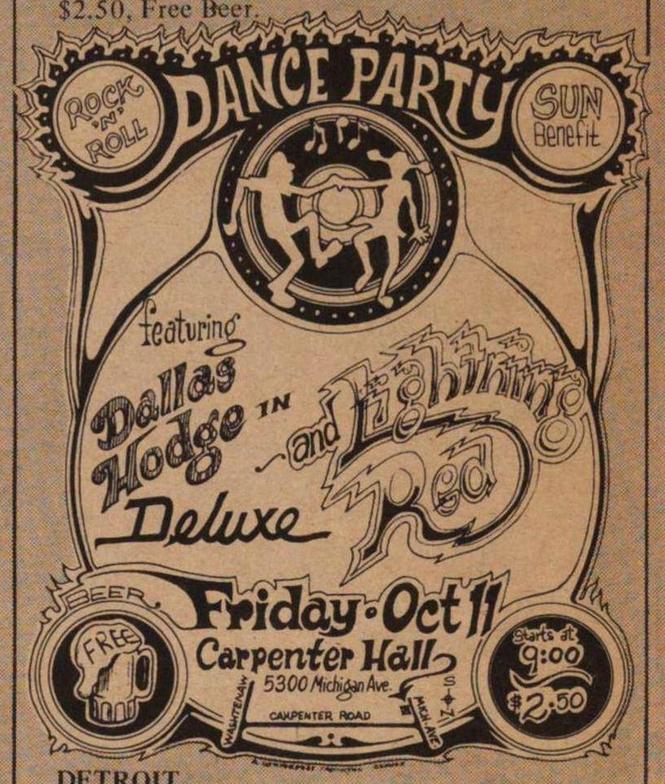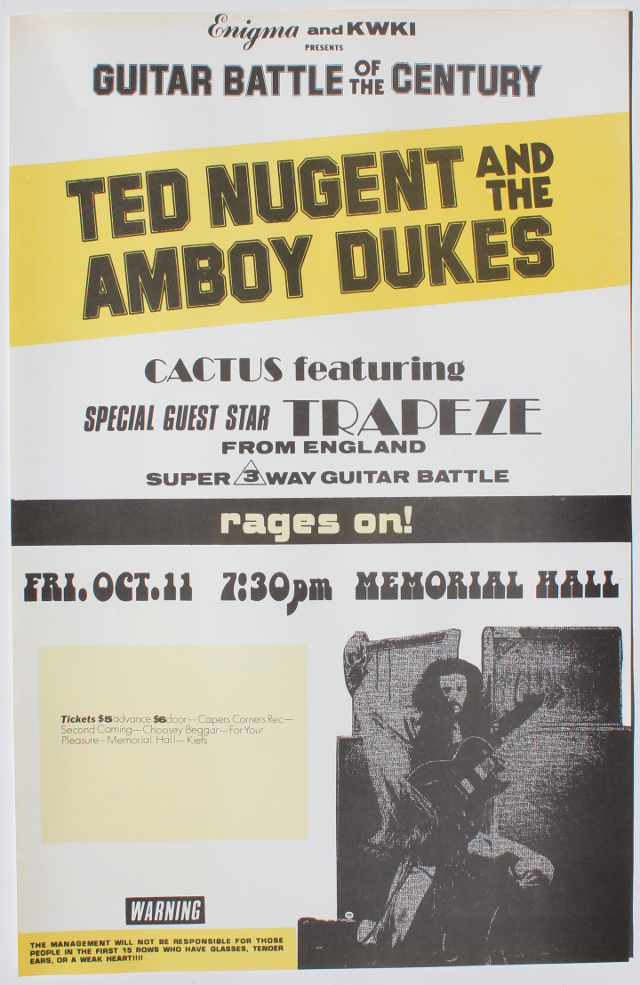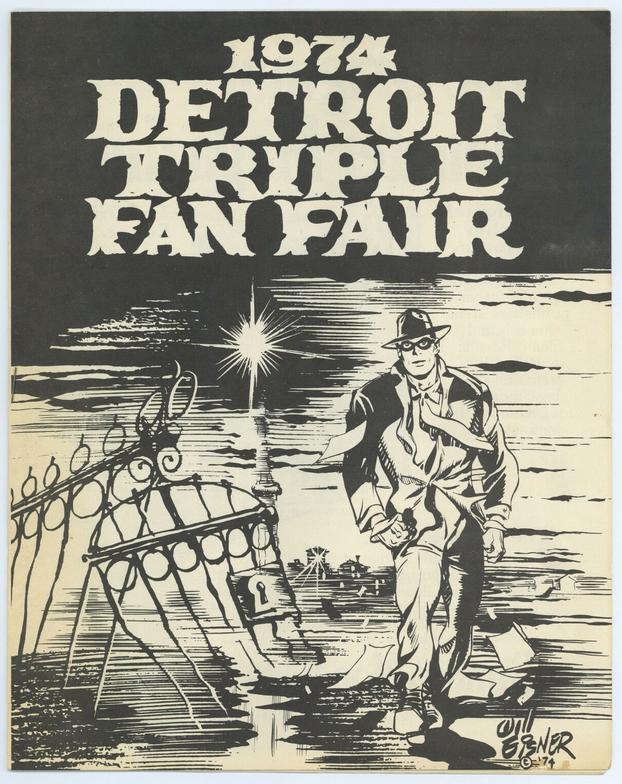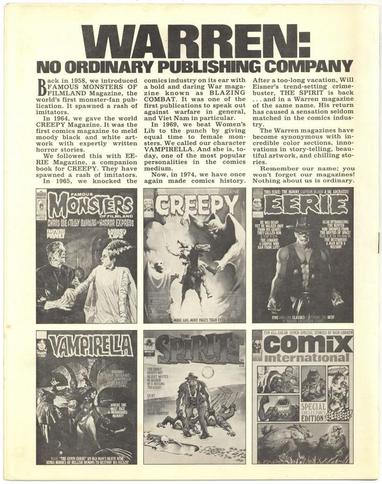Splatt Gallery
Double click here to add text.
Splatt Gallery's History of Michigan Music Posters
Volume Ten - 1974 - Page Sixteen
***********************************************************
A hand-painted version of the poster/handbill.ad for the “Hollywood Street Revival & Dance”, “Banned From The Roxy” show, headlined by the New York Dolls at the Hollywood Palladium in Los Angeles, California on October 11, 1974.
When we last saw Iggy Pop, exactly two months prior to this date, he was being thrown into a burlap sack, bloodied and beaten, self-inflicted and coerced, and deposited in the street gutter in front of Rodney Bingenheimer’s English Disco on the Sunset Strip, as the dramatic conclusion of his bizarre one-time-only, one-man show, “Murder of a Virgin”.
Danny Sugerman, manager of the post-Jim Morrison Doors, had high hopes of reforming the band, with Iggy Pop in place of Morrison, but those hopes were dashed when guitarist Robbie Krieger and drummer John Densmore split away from keyboardist Ray Manzarek and formed the Butts Band. Sugerman remained as manager for only the solo Manzarek, and when Manzarek phoned Sugerman to ask how the “Murder” show had gone, Sugerman put his best spin on the debacle, “It was great”.
Time was running out, it had been three months since Iggy’s admirable performance as a potential Morrison replacement at the Whisky a Go Go in July, when Manzarek’s band played a Doors tribute set on the anniversary of Morrison’s passing, and Iggy was continually “snatching defeat from the jaws of victory” with his drug-induced erratic behavior and unreliability, his public antics landing him in various degrees of trouble and costing him his front teeth.
Sugerman saw the upcoming Palladium show, which was being hyped as the “Death of Glitter”, along the lines of the “Death of Hippie” mock funeral in 1967, as a chance to launch an Iggy/Manzarek combo. He got Iggy some new front teeth and put a band together that consisted of Manzarek, ex-Silverhead bassist Nigel Harrison (whom Iggy had dragged into his “Murder of a Virgin” performance), famed session drummer Gary Mallaber, and ex-Frost guitarist Dick Wagner. Wagner, however, had to bow out, so Iggy recruited ex-Stooges guitarist James Williamson, much to the chagrin of Manzarek.
The band only had one rehearsal prior to the show, so the set list consisted of cover versions of Chuck Berry’s “Route 66” and “Nadine”, Bob Dylan’s “Subterranean Homesick Blues”, and Solomon Burke’s “Everybody Needs Somebody To Love”. Ex-Rationals’ front man Scott Morgan happened to be in Los Angeles and he joined the show on harmonica.
As it turned out, the performance was actually pretty good, Manzarek commented that the band “rocked like a motherfucker” and a reviewer in the LA Times newspaper wrote:
“Among the likeliest to survive (of all the bands at the show) was, unlikely as it might seem, Iggy Pop, looking healthy, sounding good (Ray Manzarek and former Stooges guitarist James Williamson were in the backing unit) and continuing to be one of the most gripping stage personalities extant, even when he sings ‘Route 66’ instead of ‘Raw Power’.”
Immediately after the show, Iggy took off with New York Dolls’ guitarist Johnny Thunders and Fred Smith (yet another Michigan rocker hanging out in LA). The next time that Sugerman heard from Iggy was a few days later when he got a call from a doctor at the UCLA Neuropsychiatric Hospital, who said that he had just admitted “two Jesus Christs, a Napoleon Bonaparte, an albino who thinks he’s Santa Claus, and now I have this guy the cops brought in who claims he’s Iggy Pop and you’re his manager”.
Newspaper ad for the “Death of Glitter” show at the at the Hollywood Palladium in Los Angeles, California, October 11, 1974.
A review of the “Death of Glitter” show at the at the Hollywood Palladium in Los Angeles, California on October 11, 1974. The review had high praise for Iggy, “in tip top form”, and his band, comprised of Ray Manzarek, James Williamson, and Noel Harrison. The set consisted of cover songs, “Route 66”, “Everybody Needs Somebody”, “I Just Wanna Make Love To You”, and Dylan’s “Subterranean Homesick Blues”.
Bachman-Turner Overdrive returned to Michigan for five shows in a row around the state, giving them eleven appearances in Michigan in 1974 alone, add to that four shows in 1973.
This time they brought along their current tour opener, home-state favorite Bob Seger. They performed at Cobo in Detroit on October 11, 1974, a second show the following night was added by popular demand. From there, they went to the Bowen Fieldhouse in Ypsilanti on the 13th, the Hedgcock Fieldhouse in Marquette on the 14th, (with a poster by an unknown artist) and the IMA Auditorium in Flint on the 15th.
With that level of Michigan popularity, we need to add some BTO to the soundtrack, this one is as fine as any:
Bachman-Turner Overdrive – Blue Collar (1973)
https://www.youtube.com/watch?v=lvV0d0SddJ8
And here is a live clip from one of the Cobo shows:
Bachman-Turner Overdrive – Live in Detroit, Michigan (10/11/74)
https://www.youtube.com/watch?v=__Vz4wYZI7k
A full-page ad from RPM Ltd, representing Bachman-Turner Overdrive, touting their success in sold-out shows at Cobo Arena in Detroit, Michigan, October 11-12, 1974. According to the ad, there were two shows on the second day, making a total of three performances and a gross take of $210,000 (nearly $1.2 million in today’s dollars). Bob Seger & the Silver Bullet Band, along with Wet Willie, were the show openers, presumably at all three shows.
With a #1 single on the Billboard Hot 100 chart, and the album also eventually rising to #1 on the albums chart, it was the commercial peak for the band.
Bachman-Turner Overdrive – You Ain’t Seen Nothing Yet (1974)
https://www.youtube.com/watch?v=4cia_v4vxfE
A full-page Columbia Records ad for Herbie Hancock’s 14th studio album “Thrust”, inset with the newspaper ad for his appearance at the Masonic Auditorium in Detroit, Michigan on October 12, 1974. Like his two most previous albums, including his 1973 blockbuster “Head Hunters”, the album consisted of only four tracks, actually an increase over his three pre-“Head Hunters” albums, each of which consisted of only three tracks.
Three of the tracks on “Thrust” are funk exercises, the type of which made “Head Hunters” such a break-through, but it is the change-of-pace composition “Butterfly”, which one reviewer called “a match for any tune he's written before or since”.
Herbie Hancock – Butterfly (1974)
https://www.youtube.com/watch?v=knbmKDUYDXc
A full-page Motown Records ad in the October 12, 1974 issue of Billboard magazine for the second single from their debut album “Machine Gun”.
The October 12, 1974 issue of Billboard magazine had a thirty-page special tribute to Mickie Most and his label RAK Records. One of those pages was an illustration of the label’s “flag ship” artists, with Suzi Quatro at the top of the mast. Another page had a group photo, with Suzi the only one taking advantage of the free wine.
Another page from the RAK Records tribute in the October 12, 1974 issue of Billboard magazine.
A newspaper ad with Mike Quatro opening for Aerosmith in Bowling Green, Ohio on October 12, 1974.
David Bowie returned to Michigan for a six night residency at the Michigan Palace in Detroit, October 15-20, 1974. The tour had begun in June (including two shows in Detroit that month) as a promo tour for the album “Diamond Dogs” with an elaborate city-scape stage design that weighed 6 tons and incorporated over 20,000 moving parts including a variety of props, such as streetlamps, chairs and catwalks, and a hydraulic cherry-picker that lifted Bowie over the audience (and at least on one occasion got him stuck out there).
The tour took a break during the month of August, during which time Bowie began recording in Philadelphia what would become his “Young Americans” album. The tour re-started in September in California, but by October the large stage set was abandoned, and the set list and band line-up were retooled to include some of the new songs, the final leg of the tour was referred to as “The Soul Tour” or “The Soul/Philly Dogs Tour”.
The link below is an audience recording of the October 16th show. An official release of the October 20th show was planned for a Record Store Day release in April 2020, but has currently been rescheduled for release on August 29, 2020.
David Bowie – Live in Detroit, Michigan (10/16/74)
https://www.youtube.com/watch?v=08FIdpL0KUs
Poster for KISS at the Thunder Chicken in Comstock, Michigan on October 17, 1974. This was the ninth Michigan appearance for KISS and their second time at the Thunder Chicken.
A 1974 “tour blank” poster that could have been used for any of three Michigan shows in October, his first return to the state in four years. There was a show on October 17, 1974 at the Masonic Auditorium in Detroit, on October 19th at the Read Fieldhouse in Kalamazoo, and on October 20th at the IMA Auditorium in Flint. It will be another four years before he comes back to Michigan again.
A nice full-page Warner Bros. Records ad for Van Morrison with tour dates that include three Michigan shows, on October 17, 1974 at the Masonic Auditorium in Detroit, on October 19th at the Read Fieldhouse in Kalamazoo, and on October 20th at the IMA Auditorium in Flint.
Poster/ad for the Rainbow Room in the Shelby Hotel in Detroit, Michigan with three shows by Ellen McIlwaine, October 17-19, 1974. An accomplished self-taught guitarist, she began her career in 1966 at the at the Cafe Au Go Go in New York City's Greenwich Village, where she became friends with, and jammed with, Jimi Hendrix. She formed the band Fear Itself which released one album, then went solo again, recording two albums for Polydor Records.
She developed a distinctive style of slide guitar, both acoustic and electric, and was featured on a compilation “Guitar Album” of live performances by Polydor artists, the only female among the roster that included Eric Clapton, Roy Buchanan, Rory Gallagher, T-Bone Walker, Link Wray, and John McLaughlin.
Following these Detroit shows, she would later record her third album which included a version of Stevie Wonder’s “Higher Ground”, from which her slide guitar licks have become frequently sampled.
Ellen McIlwaine – Higher Ground (1975)
https://www.youtube.com/watch?v=BkJPKt6bzaM
A full-page Reprise Records ad for the ninth studio album by Fleetwood Mac with the supporting tour dates, including the band’s 25th Michigan show, at the Ford Auditorium in Detroit on October 18, 1974, the same venue they had last played in Michigan in February 1973.
The reasons for the long absence, by a band that might play five or six shows a year in Michigan, going back to their performances at the Grande Ballroom in Detroit in 1968, were internal conflicts within the band and with their long-time manager, Clifford Davis, who wanted them to tour despite the band’s turmoil’s. Davis went so far as to assemble a completely new group of musicians, billing them as Fleetwood Mac. The real Fleetwood Mac obtained an injunction against the “fake Mac”, while Davis countered with an injunction preventing the real band from touring.
During the court battle, which the real Fleetwood Mac eventually won, the band moved from England to Los Angeles and obviously firing Davis, became self-managed. The tour ad includes a band photo, labeled with their names to leave no doubt as to who was in the band. The album, and the tour, however, where the last ones with guitarist Bob Welch, who left the band at the end of the tour and was replaced by Lindsey Buckingham and Stevie Nicks.
A full-page Harvest Records ad for the second album by Triumvirat, published at the same time that the German prog rock band made its only Michigan appearance, opening for Fleetwood Mac at the Ford Auditorium in Detroit on October 18, 1974. Rolling Stone magazine placed the album “Illusions On A Double Dimple” at #45 on their list of The 50 Greatest Prog Rock Albums of All Time.
Additional information from RD Francis:
I have to add one more "Detroit" connection. Triumvirat's Illusions On A Double Dimple. During that album, while he didn't record, Doug Fieger toured with that German band as bassist. At the time, Sky split, and Doug needed work. He got the gig through the Musicians Union. Nothing about the band shows him as an "official member," so definitely just touring in 74 to 75. After that, he hooked up with the Sunset Bombers, which is member-connected to the Rubber City Rebels and (out of Boston), the new wave band 1994.
Triumvirat – Illusions On A Double Dimple (album) (1974)
https://www.youtube.com/watch?v=gWOY4uLpxgI
A show review with photo and nice lettering of Fanny in the October 18, 1974 issue of the LA Free Press in Los Angeles, California.
A jarring pink and green color combination on this Globe Poster for an eight-night residency by the singer Latimore, in his first major Detroit appearance, at the 20 Grand Driftwood Lounge, October 18-27, 1974. The poster lists his most recent, and biggest, hit of his career, “Let’s Straighten It Out” which spent two weeks at number one on the Billboard R&B singles chart in November, 1974.
Latimore – Let’s Straighten It Out (1974)
https://www.youtube.com/watch?v=aRctq68MGxM
An ad for an NBC-TV special Flip Wilson show which aired on October 18, 1974, and included two Detroit-raised artists, Martha Reeves and Lily Tomlin.
A poster for Rare Earth in Bobby Goldsboro's home town of Dothan, Alabama on October 19, 1974.
Ad for Return To Forever featuring Chick Corea at The Stables in East Lansing, Michigan on October 20, 1974.
A full-page record company ad for the seventh, and final, album (for the next twenty years) by the British band Traffic, with tour dates including two nights in Detroit, Michigan at Olympia Stadium, October 20-21, 1974. The second night was the band’s twelfth, and final, Michigan show (for the next twenty years).
A bootleg recording of the October 21, 1974 show in Detroit, Michigan, is allegedly the last known concert recording by the band Traffic.
A full-page record company ad for the first live album by the British group Fairport Convention, released in July 1974, with inset of the ad for their appearance in Detroit, Michigan, opening for Traffic at Olympia Stadium, October 20-21, 1974.
KISS returned for their 10th and 11th Michigan shows, at The Brewery in East Lansing, October 21-22, 1974. A post-show review described the band as something “only a Detroit crowd could have loved”, although the two sold-out shows seemed to please the East Lansing crowd as well.
Here is an audio recording of their show on the first night:
KISS – Live in East Lansing, Michigan (10/21/74)
https://www.youtube.com/watch?v=gTmCMz5xcUA
Also, an ad for the first night with an upcoming show by Bob Seger.
Maybe it was technically true, but it was more of an inside joke that this “Special 1 Week Engagement” ad by an unknown artist at Bimbo’s in Ypsilanti, October 21-26, 1974 was the “First Michigan Appearance by Weather Report’s percussionist”, since for the individual, Muruga, that title was simply one more line on an impressive, ever-growing resume. In fact, the individual, Muruga, already had countless Michigan appearances, going all the way back to our earliest chapters, when one of Michigan’s first proto-rock groups, the Low Rocks, formed in 1959, featured the drummer named Steve Booker.
Booker also spent some time with the Low Rocks’ friendly rivals, the Thunder Rocks, during the first few years of the 1960’s when the two bands, along with The Royaltones and Johnny & the Hurricanes from Toledo, Ohio, gigged relentlessly throughout the area, the model of rock bands at the time were purely instrumental without a singer or a front person.
Those bands produced only a handful of recorded singles, and Booker’s extensive discography began in earnest when he began backing the folk-singing duo Jim & Jean in 1964, and contributed to their second album “Changes” which was released in 1966.
In 1965 he became the original drummer for Detroit’s first psychedelic band, The Spike Drivers. Booker appears on some of the earliest Spike Drivers’ recordings, but he parted ways with the band just prior to their signing with Reprise Records, in part because his over-powering and innovative style of drumming eclipsed the band’s sound. Booker’s drumming, on its own, was enough of a popular draw that he held court at the Chess Mate club in Detroit, performing as Steve Booker throughout 1965 and 1966.
He also toured as a member of The Casuals, backing singer Brenda Lee, performed frequently with John Lee Hooker, billed as “Hooker and Booker”, and joined the Paul Winter Consort, appearing on their 1969 album “Something In The Wind”.
Also in 1969, Booker performed at the Woodstock festival with Tim Hardin’s band, where he met the yoga teacher Swami Satchidananda who gave him the name Muruga. For the complete story of his Woodstock experience, told in his own words, go here:
http://www.artistwd.com/joyzine/music/woodstock/woodstock.php#.Uhp-SD_U-p0
As related in the above story, Booker was immersed in the Greenwich Village scene in New York City, jamming with the likes of Jimi Hendrix and Bob Dylan, later recording with Dylan on sessions for albums by Allen Ginsberg. He also became friends with artist Peter Max who provided the artwork for Muruga's 1970 record “Rama Rama/Endless Path” which was also just happened to be the first recording engineering by Don Fagenson, also known as Don Was.
Returning to Detroit, he performed with Ted Nugent, who called him "dangerous and incredible" on drums, one particular jam session with Nugent, based around a drum beat and song of Booker's later evolved into Nugent’s 1975 song "Stranglehold". He also recorded with Dave Brubeck’s son Darius, Dick Wagner’s Ursa Major, Al Kooper, and yes, Weather Report, performing on two of their albums, 1973’s “Sweetnighter” and 1974’s “Mysterious Traveller”.
So, the statements on the above poster, “…with Superstars in Super Places, from Brubecks to Dylan, from Buffy Ste. Marie to Stevie Wonder, from Tim Hardin to Jimi Hendrix, from Al Kooper to Alice Cooper” is no exaggeration, if anything it is an understatement. And we will be seeing much more of Muruga as we continue, in particular, in his work with George Clinton as a “lifetime member of the P-Funk family”.
By the way, Weather Report had just performed in the area, with a show on October 4th at the Michigan Palace in Detroit, and on October 9th at The Brewery in Lansing, near the time that “Weather Report’s percussionist” was making his “first Michigan appearance”. We wonder if he might have sat in.
An ad with Mike Quatro opening for Focus and Aerosmith in Port Huron, Michigan on October 22, 1974.
A full-page Casablanca Records ad for the release of the second album by KISS, released on October 22, 1974, the same day that KISS played their second of two nights at The Brewery in East Lansing, Michigan.
Here is a TV commercial for the “Hotter Than Hell” album by KISS:
https://www.youtube.com/watch?v=338U9szEoSs
The final poster/ad for the Rainbow Room in the Shelby Hotel in Detroit, Michigan, with the scheduled performances by Willie Dixon, October 23-25, 1974, followed by Dallas Hodge’s Deluxe on October 26th, and with the regulars, Eddie Nuccilli Plural Circle every Sunday, the Friends Road Show every Tuesday, and Righteous Bob Rudnick with The Records.
A story in the Fifth Estate newspaper reported that Peter Andrews had resigned from Rainbow Productions, earlier we had related the story of the night that John Sinclair threw in the towel.
The Fifth Estate, which had been following the aftermath of the financial disaster of the 1974 Ann Arbor Blues & Jazz Festival In Exile, wrapped up the impending end of the Rainbow:
“On the same day that Andrews resigned, Rainbow’s band, the Rockets, also broke up, again mostly because of financial problems. There are now doubts as to whether the Rainbow Room will continue to exist and if so, how. Willie Dixon, playing through Friday, Oct. 25, is the last act booked and publicized by Rainbow Agency. After that, it’s up for grabs.”
Another great Globe Poster, for Marvin Gaye in Tulsa, Oklahoma on October 25, 1974.
A poster/ad by Crow Quill showing a phoenix rising from the tinder of past bands, Poco, Buffalo Springfield, Flying Burrito Brothers, Manassas and the Byrds, to form Souther-Hillman-Furay. Another stick for Longbranch Pennywhistle could have been added to the pile for J.D. Souther’s former band, the Detroit-born musician who returned to his birth state for this show at Hill Auditorium in Ann Arbor, Michigan on October 25, 1974.
This was the band’s fourth, and final, Michigan show, having appeared earlier in the summer at the Pine Knob Music Theater in Clarkston, opening twice for Three Dog Night and once for the Mahavishnu Orchestra. Southern had also previously performed in Michigan as a solo artist, opening for Crosby & Nash for three shows in September 1973.
In trying find information about the artist Crow Quill, we can see that he took his name from a popular fine point nib in a Speedball pen set.
Poster/ad by Crow Quill for Souther-Hillman-Furay at Hill Auditorium in Ann Arbor, Michigan on October 25, 1974, in the reverse negative.
Poster/ad by Hugh Surratt for an appearance by comedian George Carlin at Michigan State University in East Lansing on October 25, 1974.
A full-page poster/ad for radio station WWWW-FM 106 in Detroit, Michigan, published in the October 25, 1974 issue of the Ann Arbor SUN newspaper. They were really big on this Quadraphonic thing, even if they didn’t know how to spell it. Earlier, the SUN had reported that W4 was “planning some kind of bombshell promotion and format change for late October.”
The back cover of the October 25, 1974 issue of the Ann Arbor SUN newspaper in Ann Arbor, Michigan announced one of the most audacious promotions in marketing history, with entrants eligible to win a pound of Columbian marijuana. You had until the end of the year to get your entry forms submitted.
Poster by Chris Frayne (Ozone) for the “Win A Pound of Colombian Reefer!” promotion for the Ann Arbor SUN newspaper in Ann Arbor, Michigan, that launched on October 25, 1974 with entries open until the end of the year.
It doesn’t take much, just bend the lettering a little, give them some life and they’ll pop, turning this ad for the Mojo Boogie Band at Lizard’s in East Lansing, Michigan on October 25, 1974 from bland to delightful.
A full-page Epic Records ad for the seventh album by Sly & the Family Stone, the final LP to feature the original Family Stone, coinciding with the group’s appearance at Grand Valley State University in Allendale, Michigan on October 20, 1974. It was their 18th Michigan appearance. They would not return for two years, to make their final appearance.
We had combed through the back catalog of the Wailers, “Burnin’”, “Catch a Fire”, and “Soul Rebels”, so we were ready and waiting for this one when it was released on October 25, 1974. It was the first album to be released as Bob Marley & the Wailers.
Bob Marley & the Wailers – Natty Dread (album) (1974)
https://www.youtube.com/watch?v=tDg-2Ua9AOI
A Discount Records ad promoting the entire catalog of albums by WAR to coincide with their appearance at the Bowen Field House in Ypsilanti, Michigan on October 25, 1974.
A pair of ads, one by Chris Frayne (Ozone), for the third annual Ozone Parade in Ann Arbor, Michigan on October 25, 1974, also a nearby screening of “Reefer Madness”.
And look who’s back! After a year spent in New York City, the Dogs rock and roll band returned to Michigan, with two shows at the Electric Circus Ballroom inside the Trading Post in Roseville, October 25-26, 1974, and a poster/ad by an unknown artist known, so far, only as “G”.
Poster/ad by an unknown artist for a Red White & Blue (Grass) show at Oakland University in Rochester, Michigan with Joni’s ex-husband, Chuck Mitchell on October 26, 1974.
Volume Ten - 1974 - continues - HERE
A sweet ad by an unknown artist for a benefit show for the Ann Arbor SUN newspaper with Dallas Hodge’s Deluxe, Lightnin’ Red Blues Band at Carpenter Hall in Ypsilanti, Michigan on October 11, 1974, with “All The Beer You Can Drink!!”.
Another poster/ad by an unknown artist for the benefit show for the Ann Arbor SUN newspaper with Dallas Hodge’s Deluxe, Lightnin’ Red Blues at Carpenter Hall in Ypsilanti, Michigan on October 11, 1974, with “Free Beer”, another way of saying “All The Beer You Can Drink!!”.
The Guitar Battle shows continued into their eighth month, on October 11, 1974 a three-way battle ensued in Kansas City, Missouri with Ted Nugent & the Amboy Dukes taking on Mike Pinera with Cactus and Mel Galley with the British band Trapeze. Cactus and Trapeze would also appear together in Detroit at the Michigan Palace two weeks after this show.
Will Eisner illustration on the cover of the program book for the 10th Detroit Triple Fan Fair, held at the Detroit Hilton, October 10-13, 1974. The back cover was an ad by and about Warren Publishing.


